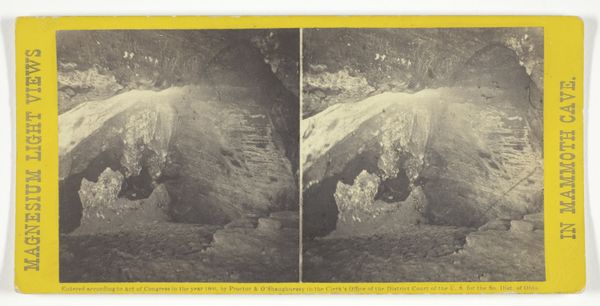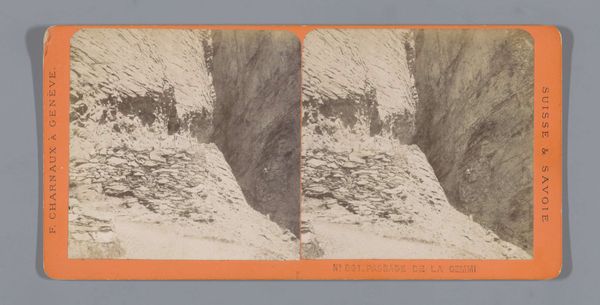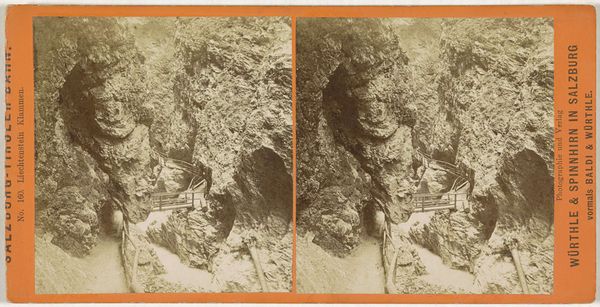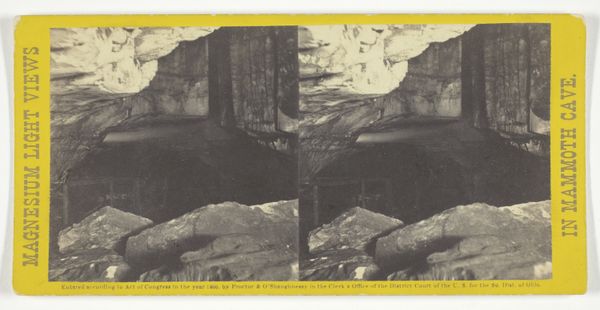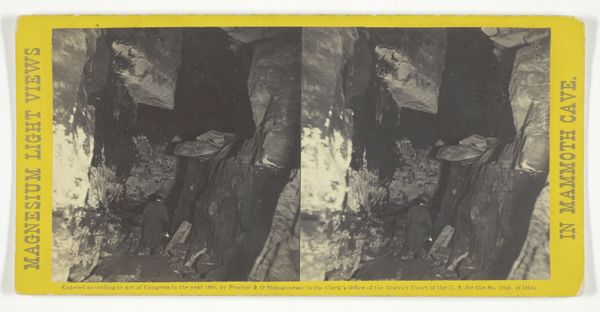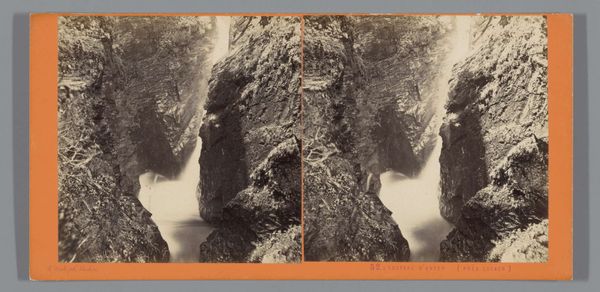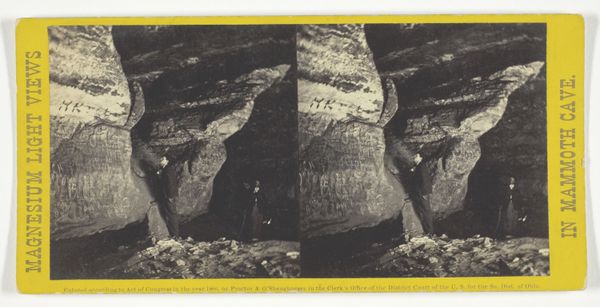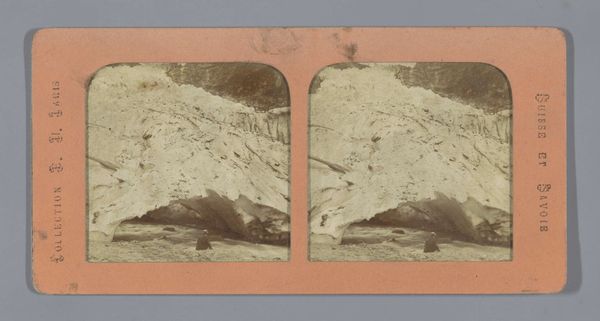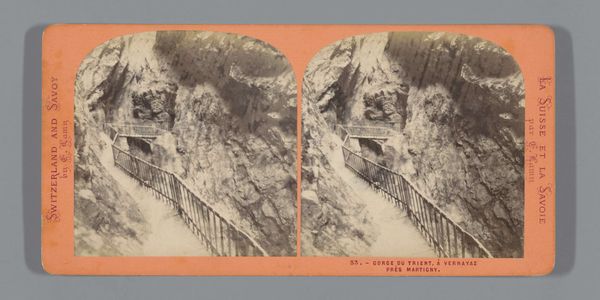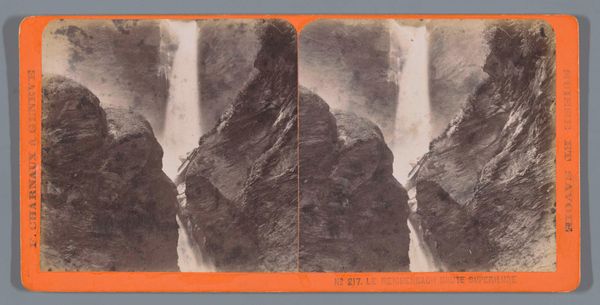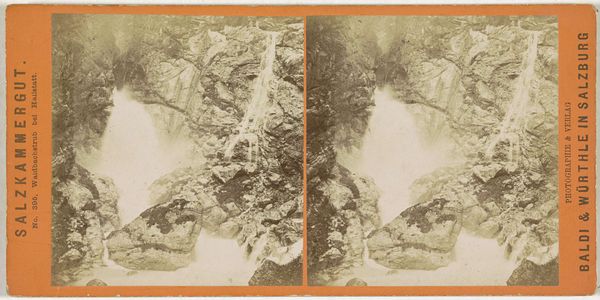
Dimensions: height 85 mm, width 170 mm
Copyright: Rijks Museum: Open Domain
Curator: What an evocative image. This is Florentin Charnaux's "Gezicht op de Taminakloof," taken after 1873. The gelatin-silver print showcases the Taminakloof, capturing the awe-inspiring natural landscape. Editor: The first thing that strikes me is the contrast between the stark light and deep shadows. There's a sense of confinement, yet also a glimpse of the sublime. The scale is immense; the cliffs seem to dwarf any potential human presence. Curator: Precisely. Charnaux’s work gained popularity during an era when landscape photography was booming, partly due to the rise of tourism and the interest in documenting scenic locations, in particular, capturing nature's grandeur was thought of as patriotic expression. It was frequently presented for popular consumption as Gelatin prints within the Carte de visite culture that also drove portrait photography at the time. Editor: Absolutely. There’s a dialogue here about humanity’s relationship with nature – an exploration of power, vulnerability, and perhaps even exploitation. I am reminded how landscape imagery has frequently romanticized uninhabited spaces when Indigenous populations or peasant laborers were conveniently overlooked. What message do you think this piece communicated to the urban Bourgeoisie? Curator: The urban population, growing rapidly, could consume through art and visual culture an engagement with a space they might never go but understand it in relationship to the enlightenment interest in mapping and scientific examination. Furthermore, landscape images offered, sometimes reinforced, a picturesque aesthetic experience to a broader market via industrial reproduction, that was an interesting cultural tension. Editor: The way Charnaux has framed the composition, guiding the eye along the path into the gorge, is a constructed perspective as well as, literally, a constructed pathway, inviting a carefully managed and somewhat curated journey. Curator: Very good point, that speaks to how art at that time not only reproduced realities but framed our understanding and relationship to social and spatial dynamics. We cannot dismiss its role in perpetuating ways of knowing and seeing that had both positive and negative implications for how landscapes like this were valued and preserved...or not! Editor: Indeed. Thank you for adding critical context to the historical reading, it changes my engagement. I have a renewed appreciation for Charnaux's landscape as a mirror reflecting not just a natural vista, but also our complex, changing relationship to nature and history.
Comments
No comments
Be the first to comment and join the conversation on the ultimate creative platform.
